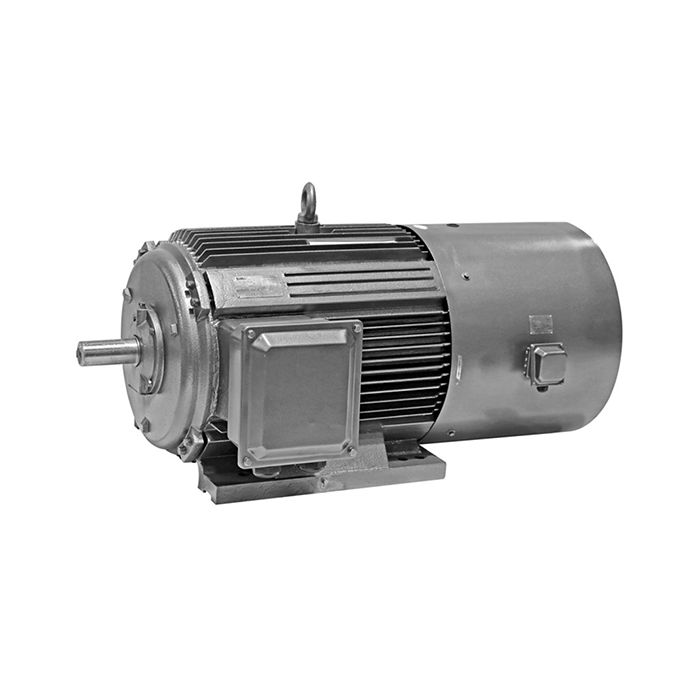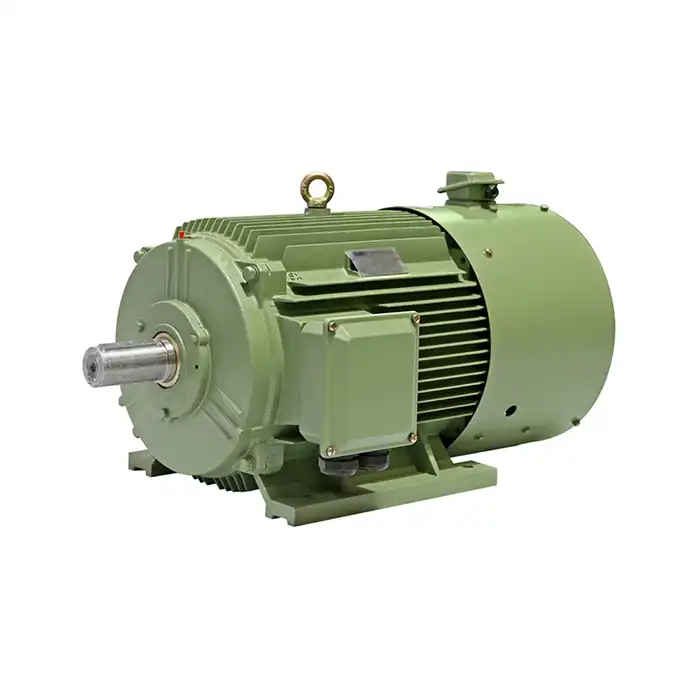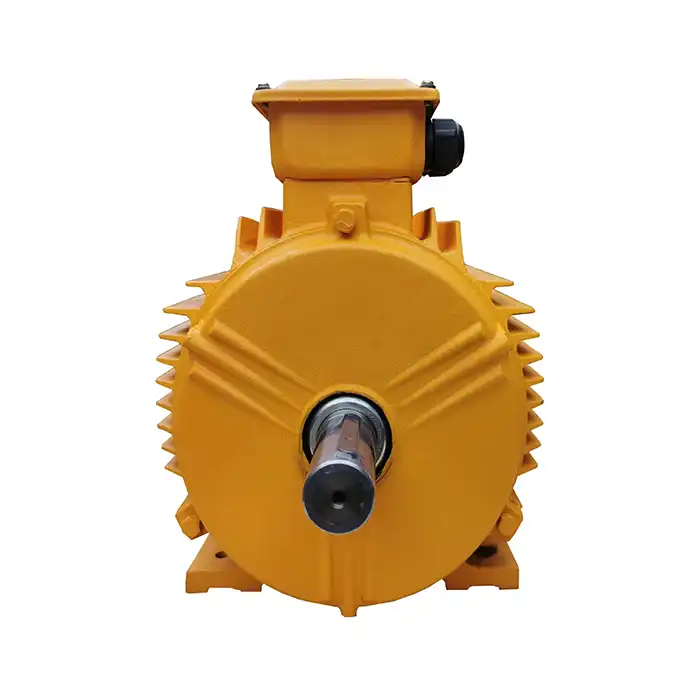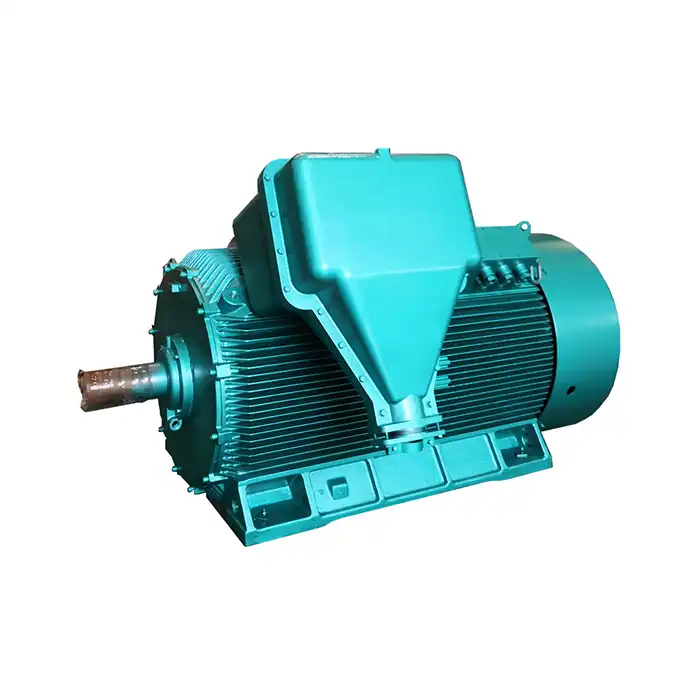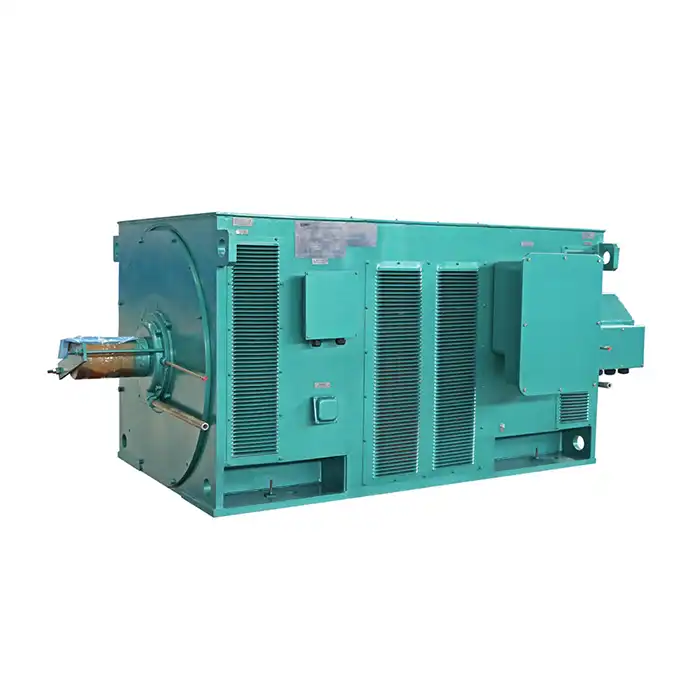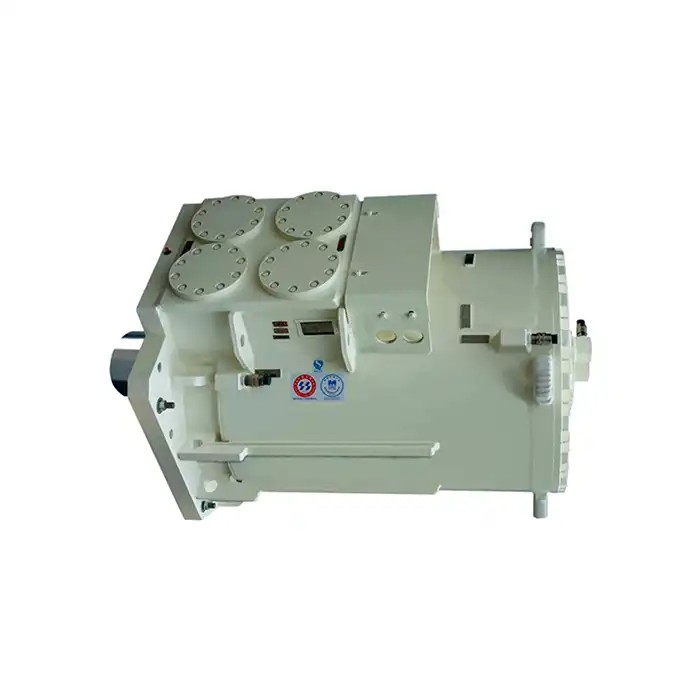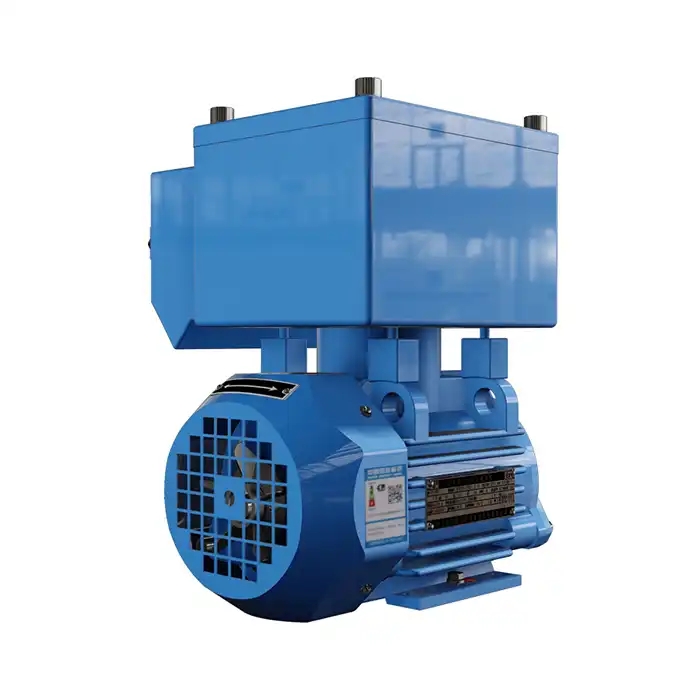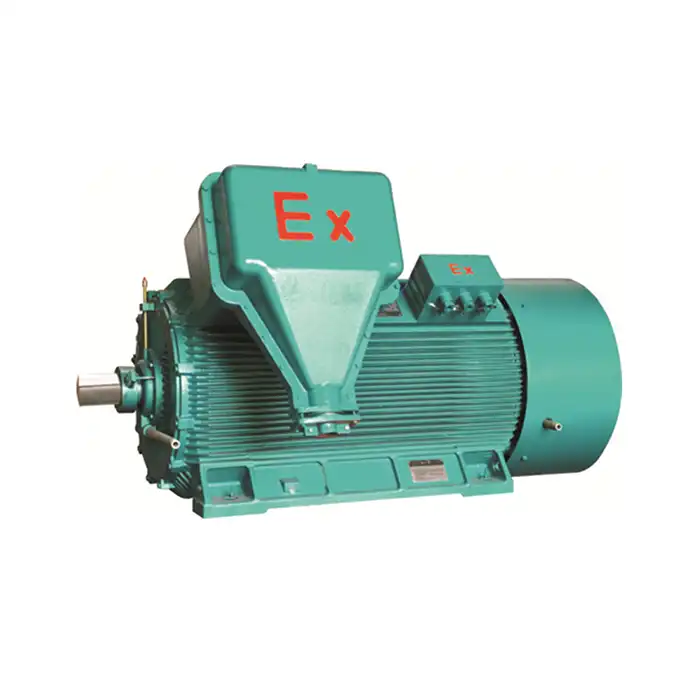High-Efficiency 11kV Motors: A Technical Overview
High-efficiency 11kV motors, which provide better performance and energy savings, are now crucial parts of many industrial applications. This technical overview explores the finer points of these motors, looking at their main parts, possibilities for energy savings, and ROI calculation.
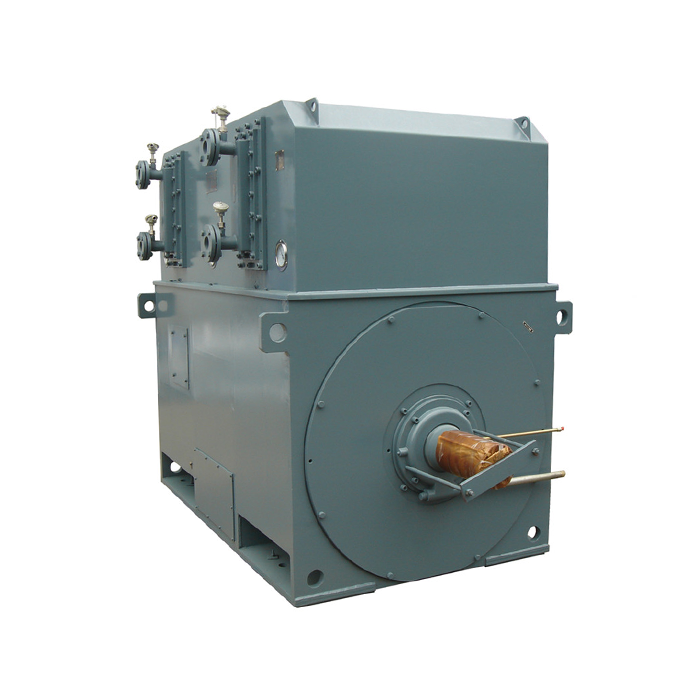
Series:YXKS
Protection level:IP54
Voltage range:3000V±5%,3300V±5%,6000V±5%,6600V±5%,10000V±5%,11000V±5%
Power range:220-3550 kW
Application:fans, water pumps, compressors, crushers, cutting machine tools, transportation machinery, etc.
Advantage:high efficiency and energy saving, light weight, low noise, small vibration, long service life, easy installation and maintenance.
Standard: This series of products complies with JB/T 12728 and JB/T 10446 standards.
Others: SKF, NSK, FAG bearings can be replaced according to customer requirements.
Core Components Driving Motor Efficiency
The efficiency of 11kV motors stems from several key components and design features that work in harmony to optimize performance. Understanding these elements is crucial for grasping the technical advantages of these high-voltage motors.
Stator and Rotor Design
The stator and rotor are fundamental components of any electric motor, including 11kV motors. In high-efficiency models, these components are meticulously engineered to minimize losses and maximize power output.
Stator cores in efficient 11kV motors are typically constructed using high-grade silicon steel laminations. These laminations reduce eddy current losses, contributing to overall motor efficiency. The stator windings are often made of copper, known for its excellent conductivity, further enhancing performance.
Rotor design in high-efficiency motors often incorporates advanced materials and construction techniques. For instance, die-cast copper rotors have gained popularity due to their superior conductivity compared to traditional aluminum rotors. This results in lower rotor losses and improved efficiency, particularly at higher power ratings.
Magnetic Circuit Optimization
The magnetic circuit plays a crucial role in the efficiency of 11kV motors. Manufacturers employ various techniques to optimize this circuit, including
- Using high-quality magnetic materials to reduce core losses
- Optimizing air gap design to minimize magnetic reluctance
- Implementing advanced lamination designs to reduce eddy currents
These optimizations result in a more efficient transfer of energy between the electrical and mechanical systems, contributing to the overall high efficiency of the motor.
Cooling System
Effective cooling is essential for maintaining the efficiency and longevity of 11kV motors. High-efficiency models often feature advanced cooling systems that help dissipate heat more effectively, reducing thermal losses and extending the motor's lifespan.
Common cooling methods in 11kV motors include:
- Forced air cooling (IC01)
- Water jacket cooling (IC31)
- Air-to-air heat exchanger cooling (IC611)
The choice of cooling method depends on the specific application and environmental conditions in which the motor will operate.
Bearing Selection
Bearings play a crucial role in the efficiency and reliability of 11kV motors. High-quality bearings reduce friction losses and ensure smooth operation, contributing to overall motor efficiency. In high-efficiency motors, manufacturers often use premium-grade bearings from leading suppliers to optimize performance and longevity.
Energy Savings: Comparing 11kV to Lower Voltage Motors
When evaluating the energy-saving potential of 11kV motors, it's important to consider how they compare to lower voltage alternatives. This comparison helps illustrate the advantages of high-voltage motors in certain applications.
Reduced Current and Power Losses
One of the primary advantages of 11kV motors over lower voltage options is the reduction in current for a given power output. This relationship is described by the equation:
P = √3 × V × I × cosφ
Where:
- P is the power output
- V is the voltage
- I is the current
- cosφ is the power factor
For the same power output, an 11kV motor will draw significantly less current than a lower voltage motor. This reduction in current leads to lower I²R losses in the motor windings and supply cables, contributing to improved overall system efficiency.
Improved Power Factor
11kV motors often operate with a higher power factor compared to lower voltage motors of similar ratings. A higher power factor indicates more efficient use of electrical power, reducing reactive power consumption and associated costs.
The improved power factor in 11kV motors can lead to:
- Reduced electrical infrastructure requirements
- Lower utility penalties for poor power factor
- Increased overall system efficiency
Reduced Cable Losses
In applications where motors are located far from power sources, the use of 11kV motors can result in significant reductions in cable losses. The lower current requirements of high-voltage motors allow for smaller cable cross-sections, reducing both material costs and power losses in the distribution system.
Implementing High-Efficiency Motors: ROI Analysis
While the technical advantages of 11kV motors are clear, the decision to implement these high-efficiency solutions often comes down to a careful analysis of the return on investment (ROI). This section examines the factors that influence the ROI of high-efficiency motor implementations.
Initial Cost Considerations
The upfront cost of high-efficiency 11kV motors is typically higher than that of standard efficiency models. However, this initial investment should be weighed against the long-term benefits and energy savings. Factors to consider in the initial cost analysis include:
- Purchase price of the motor
- Installation costs
- Any necessary upgrades to electrical infrastructure
Energy Savings Calculation
To accurately assess the ROI of implementing high-efficiency 11kV motors, it's crucial to calculate the potential energy savings. This calculation typically involves:
- Determining the annual energy consumption of the existing motor
- Estimating the energy consumption of the new high-efficiency motor
- Calculating the difference in energy consumption
- Multiplying the energy savings by the cost per kWh
The resulting figure represents the annual energy cost savings that can be expected from the upgrade.
Maintenance and Reliability Factors
High-efficiency 11kV motors often offer improved reliability and reduced maintenance requirements compared to standard efficiency models. These factors can significantly impact the overall ROI of the motor implementation. Consider the following aspects:
- Reduced downtime due to improved reliability
- Lower maintenance costs over the motor's lifespan
- Potential for extended motor life due to improved thermal management
Payback Period and Long-Term Benefits
The payback period for high-efficiency 11kV motors can vary depending on factors such as energy costs, operating hours, and the efficiency improvement over the existing motor. In many cases, the payback period for these motors can range from 1 to 3 years, with energy savings continuing to accrue over the motor's entire lifespan.
Long-term benefits of implementing high-efficiency 11kV motors include:
- Sustained energy cost savings
- Reduced environmental impact through lower energy consumption
- Improved process stability and output quality
Regulatory Compliance and Incentives
When conducting an ROI analysis for high-efficiency 11kV motors, it's important to consider any applicable regulations or incentives. Many regions have implemented minimum efficiency standards for electric motors, and some offer financial incentives for upgrading to high-efficiency models. These factors can significantly impact the overall ROI calculation.
Conclusion
Significant technical benefits and the potential for energy savings are provided by high-efficiency 11kV motors in a variety of industrial applications. Organizations can decide whether to use these cutting-edge motor solutions by carefully weighing the essential elements, energy-saving potential, and return on investment covered in this overview.
High-efficiency motors are expected to play an increasingly important role in industrial processes as long as industries continue to prioritize sustainability and energy efficiency. For engineers, facilities managers, and decision-makers aiming to streamline operations and cut energy expenses, it is essential to comprehend the technological features and advantages of these motors.
Do you want to use high-efficiency power equipment to improve your industrial operations? Shaanxi Qihe Xicheng Electromechanical Equipment Co., Ltd. is an expert in offering state-of-the-art power solutions customized to meet your unique requirements. Our team of professionals is prepared to assist you in locating the ideal motor solution, regardless of your industry—manufacturing, process control, energy generation, or any other. We provide products that combine exceptional performance and energy savings, ranging from specialized power equipment to high-efficiency 11kV motors. Your activities shouldn't be hindered by inefficient motors. Contact us today at xcmotors@163.com to discuss how we can optimize your power systems and drive your business forward.
References
1. Johnson, A. (2022). Advanced Design Principles for High-Voltage Electric Motors. IEEE Transactions on Industrial Electronics, 69(8), 7845-7857.
2. Smith, B., & Brown, C. (2021). Energy Efficiency in Industrial Motor Systems: A Comprehensive Analysis. Energy Policy, 158, 112554.
3. Zhang, L., et al. (2023). Thermal Management Strategies for High-Efficiency Electric Motors. Applied Thermal Engineering, 218, 119329.
4. Miller, R. (2020). Economic Analysis of High-Efficiency Motor Implementations in Process Industries. Journal of Cleaner Production, 276, 124080.
5. Wang, Y., & Liu, H. (2022). Advancements in Magnetic Materials for High-Performance Electric Motors. Journal of Magnetism and Magnetic Materials, 547, 168873.
6. Davis, E. (2021). Regulatory Landscape and Market Trends in High-Voltage Motor Efficiency. Energy Economics, 98, 105268.



